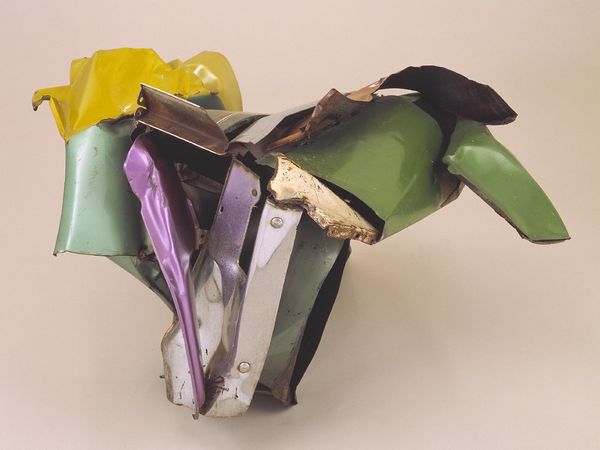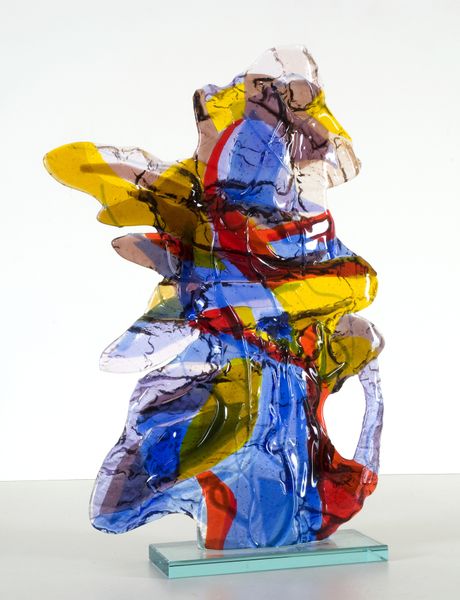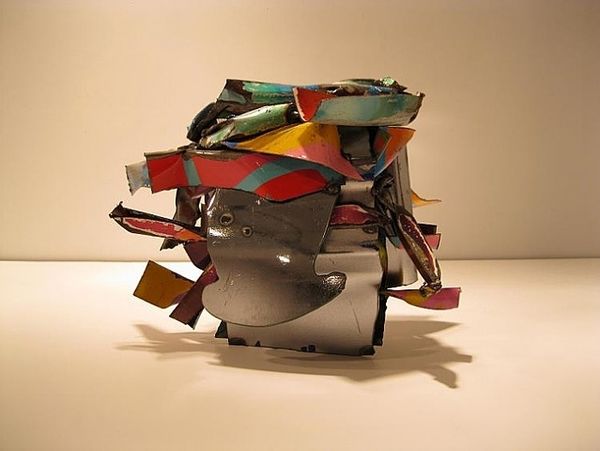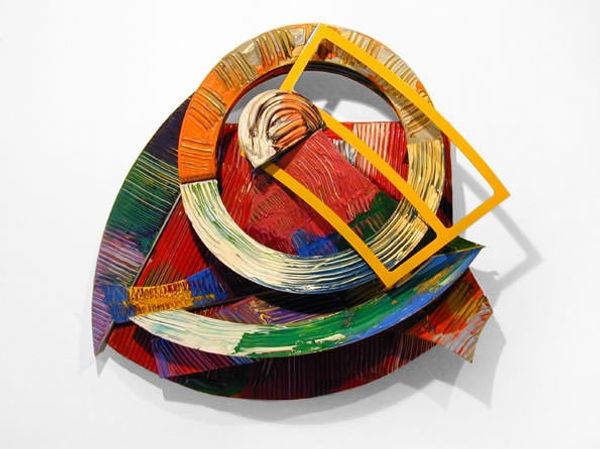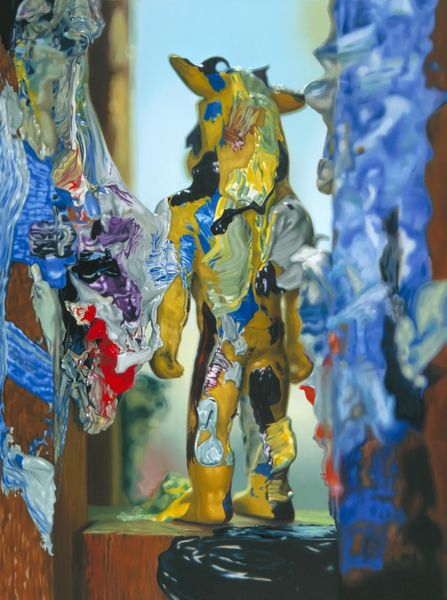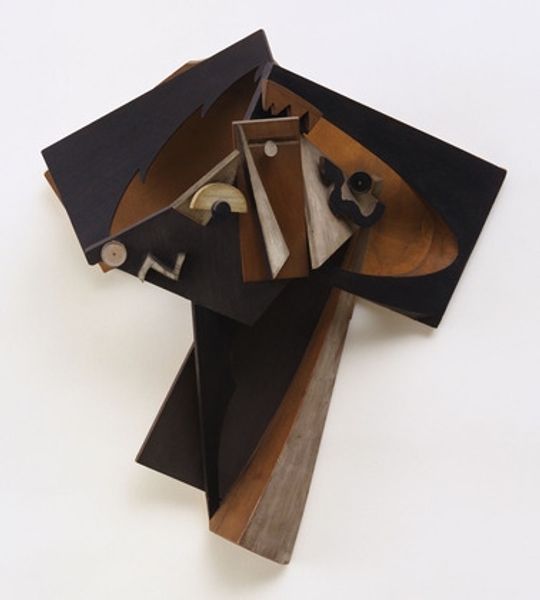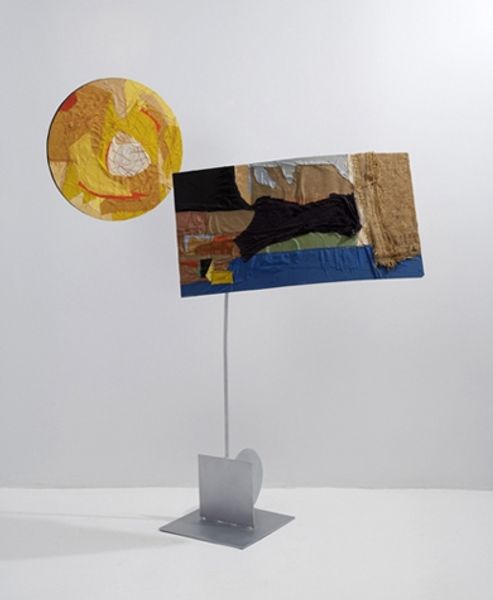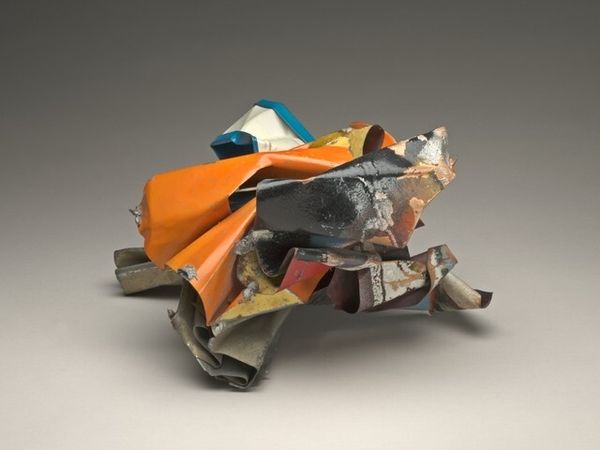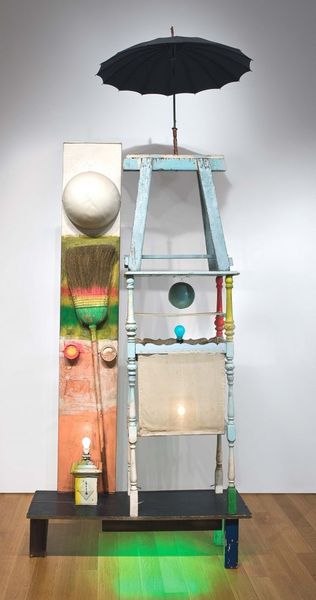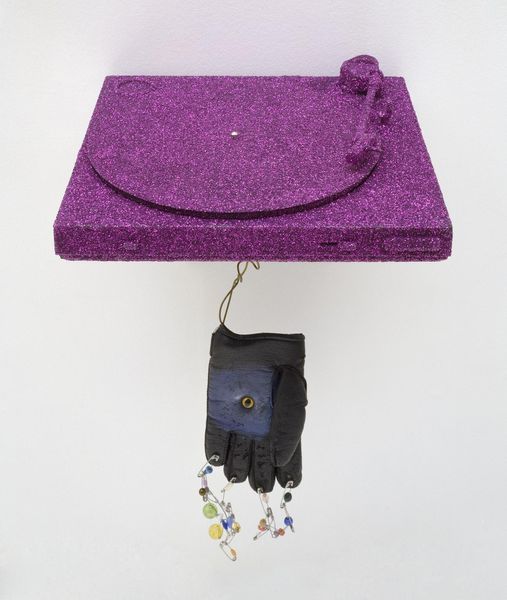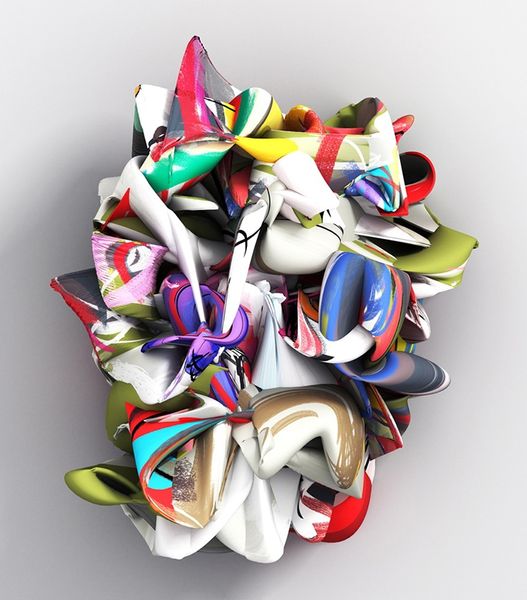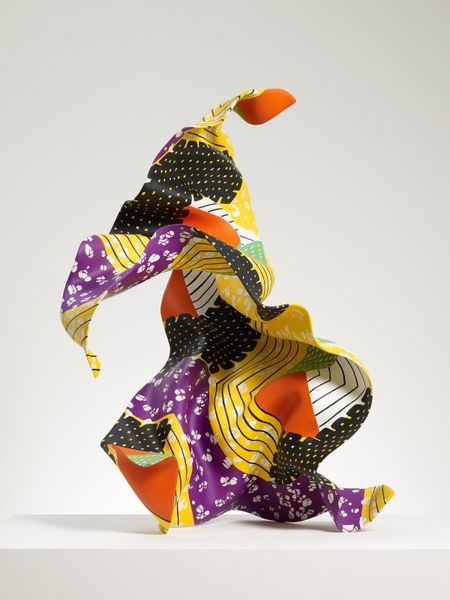
Copyright: Isa Genzken,Fair Use
Curator: Standing before us is Isa Genzken’s “Elephant,” crafted in 2006. The artist has created this assemblage from mixed media, including found objects. Editor: Well, it’s… striking. My immediate impression is that the formal elements create a kind of unstable equilibrium. The colors are jarring and the forms appear haphazard, as if everything is on the verge of collapse. Curator: Instability is central. Genzken’s choice of materials, the seemingly random assembly, all speak to a postmodern critique of consumerism and a disposable culture, right? The elephantine form then acts as a melancholic monument to our waste. Editor: Perhaps, but I see it less as commentary and more as playful manipulation of space and form. Note how the artist balances disparate elements to produce something unexpected. The rigid and industrial qualities juxtapose against softer textiles and suggest a type of abstraction rather than symbolic intent. Curator: That supposes intent isn’t embedded within those objects themselves, though. The discarded plastic, the rough fabric – each element carries a trace of its origin, a former life in mass production and use. It is like an iconographical narrative of late capitalism that resonates on an unconscious level. What kind of a monument is made from such unstable signifiers? Editor: But does that unconscious narrative really enhance the viewing experience? I'd suggest a keen focus on how forms are arranged; the visual interplay holds inherent value regardless of origin. It’s that careful arrangement that offers aesthetic engagement beyond the literal significance of materials. Curator: The literal can never be fully divorced. To me, this assemblage reflects a shared cultural memory tied to these mundane materials, prompting us to confront uncomfortable realities. It suggests something more pervasive, maybe that what is "trash" to one society holds memory of another, revealing global issues that go unseen if formal elements obscure the history of an object. Editor: I will concede that engaging with her materials and approach brings an acute visual and spatial relationship that really allows one to observe the details that might otherwise be forgotten. Curator: Yes. She is not only reusing materials, she is repurposing how the object holds memory.
Comments
No comments
Be the first to comment and join the conversation on the ultimate creative platform.
